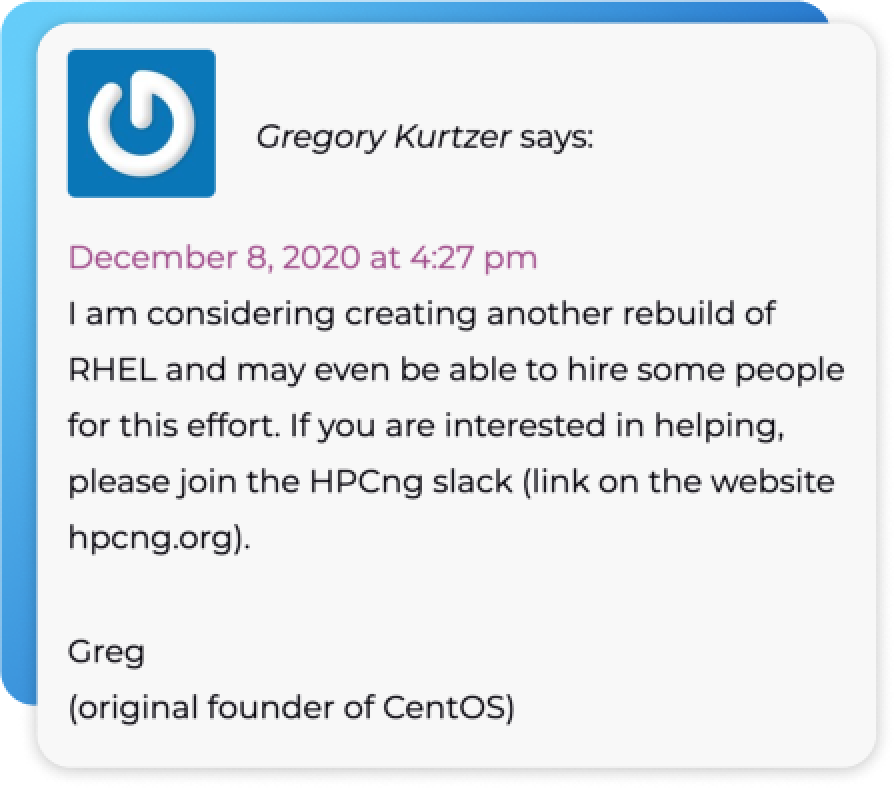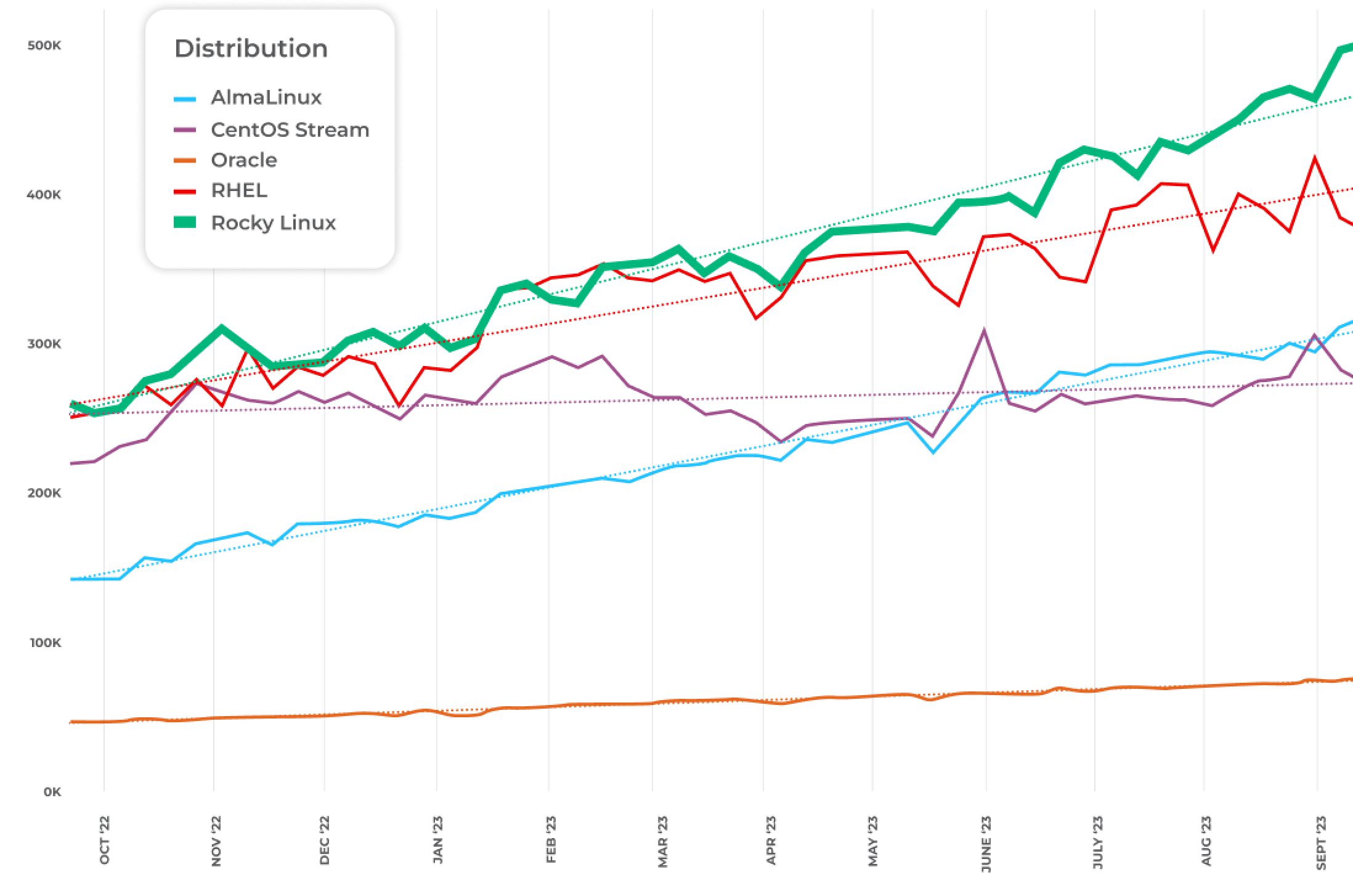The Founding Story of CIQ

We wanted to create the next generation of High Performance Computing. So we did. CIQ officially came into being on April 1st, 2020. Our journey expanded in a moment of necessity when the beloved CentOS project was discontinued and people needed help. Recognizing the gap this would leave, CIQ stepped in both to fund, facilitate, and play a pivotal role in the creation of Rocky Linux. This initiative was not just about filling a void; it was about honoring a legacy and ensuring continuity for everyone using Enterprise Linux worldwide. Gregory Kurtzer, our CEO and founder, announced the launch of Rocky Linux on December 8, 2020, as a testament to our commitment to free, open source principles and to provide a robust and reliable CentOS alternative.

Named in honor of CentOS co-founder Rocky McGaugh, Rocky Linux quickly captured the attention and support of the global tech community, becoming the top-trending repository on GitHub within days of its announcement. But CIQ’s roots in open source innovation run deeper than Rocky Linux. Gregory Kurtzer, with a rich history of initiating and leading substantial open source projects, had long been a champion of open infrastructure solutions. From founding Warewulf in 2001, a cornerstone in computational and high-performance computing research, to the inception of cAos Linux, a direct precursor to CentOS, Gregory's vision has always been clear: to empower the community to achieve the extraordinary.
The Rise of Rocky Linux

These metrics are gathered by the Fedora infrastructure and presented by the Extra Packages for Enterprise Linux (EPEL) Special Interest Group (SIG).
Widely popular as a free and open source enterprise Linux distribution, Rocky Linux has earned its reputation as the trusted successor to CentOS. Every Rocky Linux release is built 100% in the open, by the community, for the community. It is under intensive development by the Rocky Enterprise Software Foundation (RESF).
As the popularity of Rocky Linux grew within large organizations, so did the need for services and support. CIQ, being a founding sponsor for Rocky Linux, created a support model to help users gain access to dedicated technical experts. CIQ continues to build on the vision for the next generation of software infrastructure, adding value on top of our base support to provide turn-key solutions and capabilities to people.